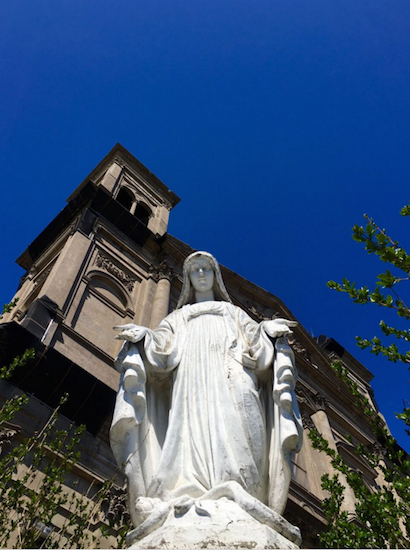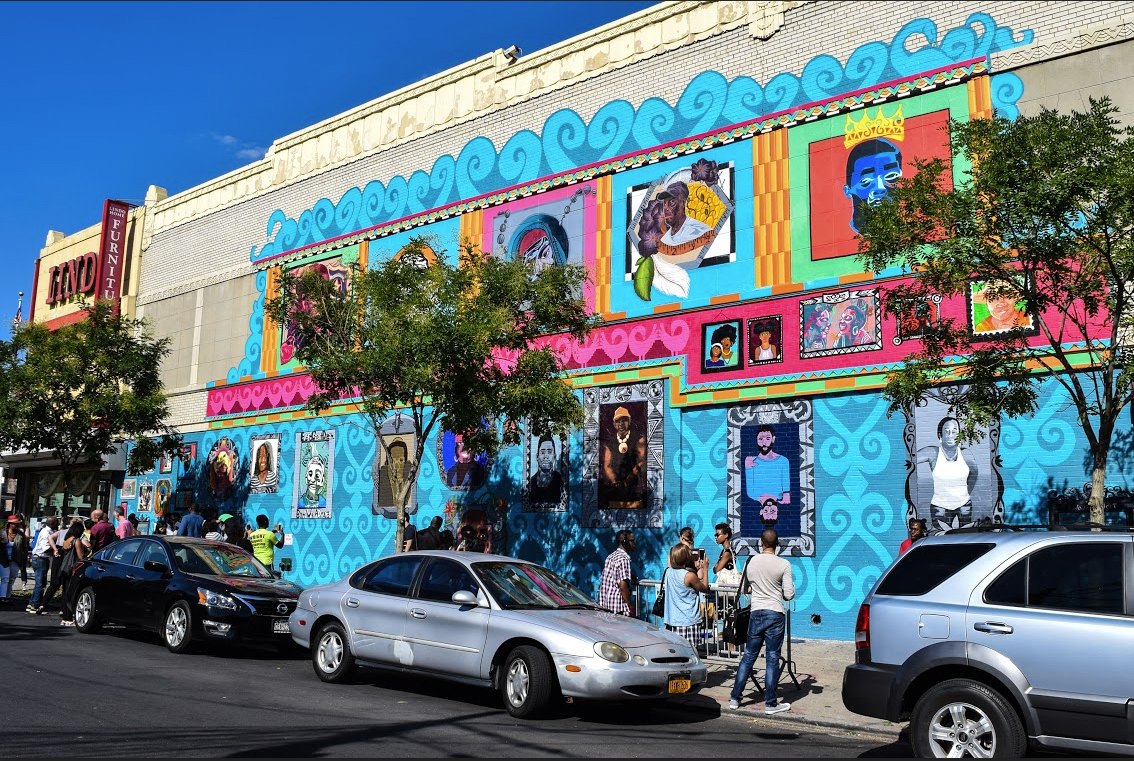Make Our Lady of Loreto a cultural center, activists ask
Eye On Real Estate: Ocean Hill church saved from demolition in 2010 still sits vacant

The statue of Our Lady of Loreto stands tall before the shuttered Ocean Hill church that bears her name. Eagle photos by Lore Croghan
They saved her from demolition. So when is the adaptive reuse going to happen?
She is Our Lady of Loreto, the shut-down Catholic church at 124 Sackman St. in the Ocean Hill section of Brownsville. She was built a century ago as a place of spiritual refuge for the area’s Italian immigrants.
They are a coalition of Brownsville community leaders and preservation-minded Italian-Americans who were instrumental in stopping the planned demolition of Our Lady of Loreto as part of a low-income housing development in 2010.
